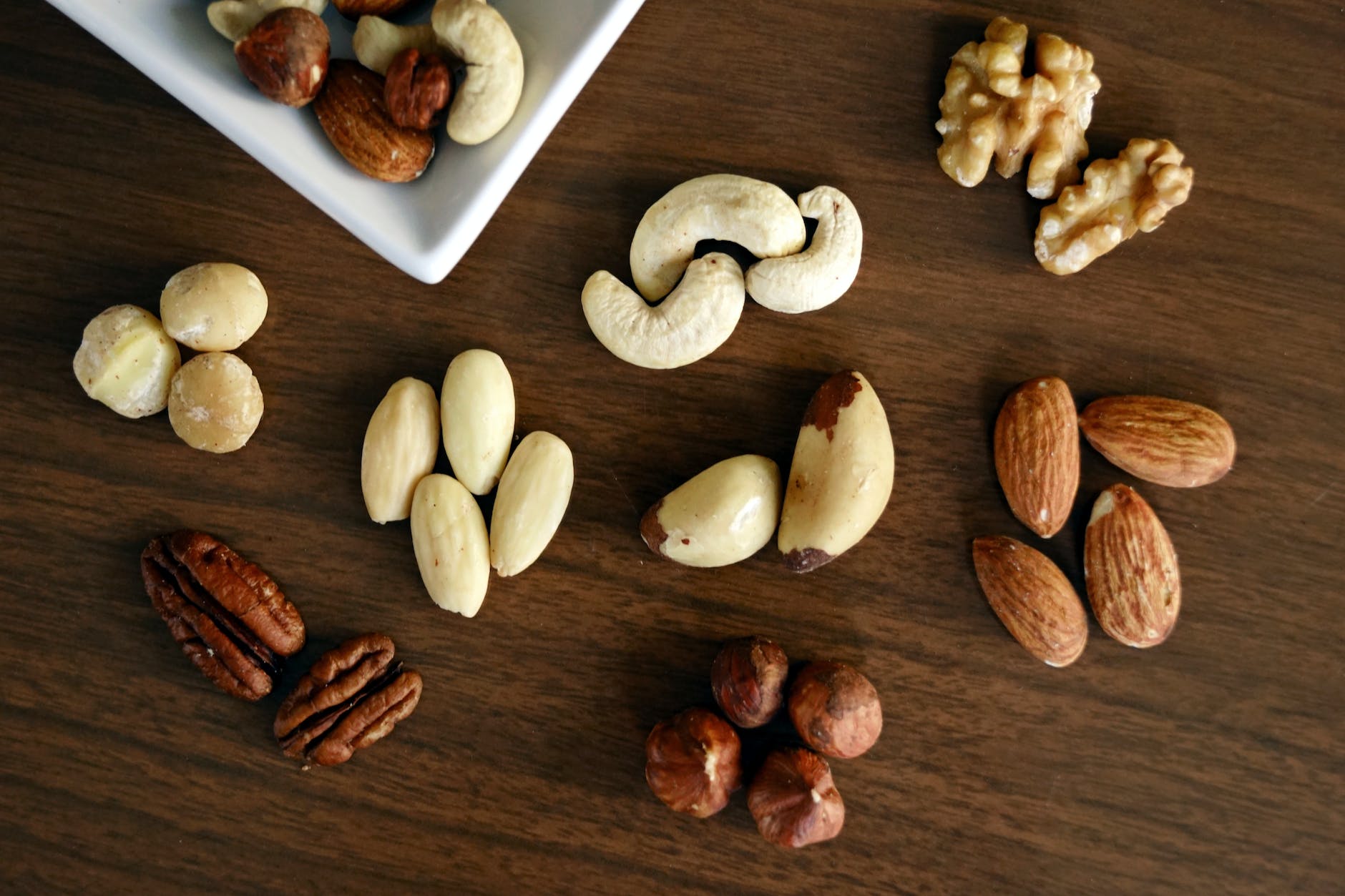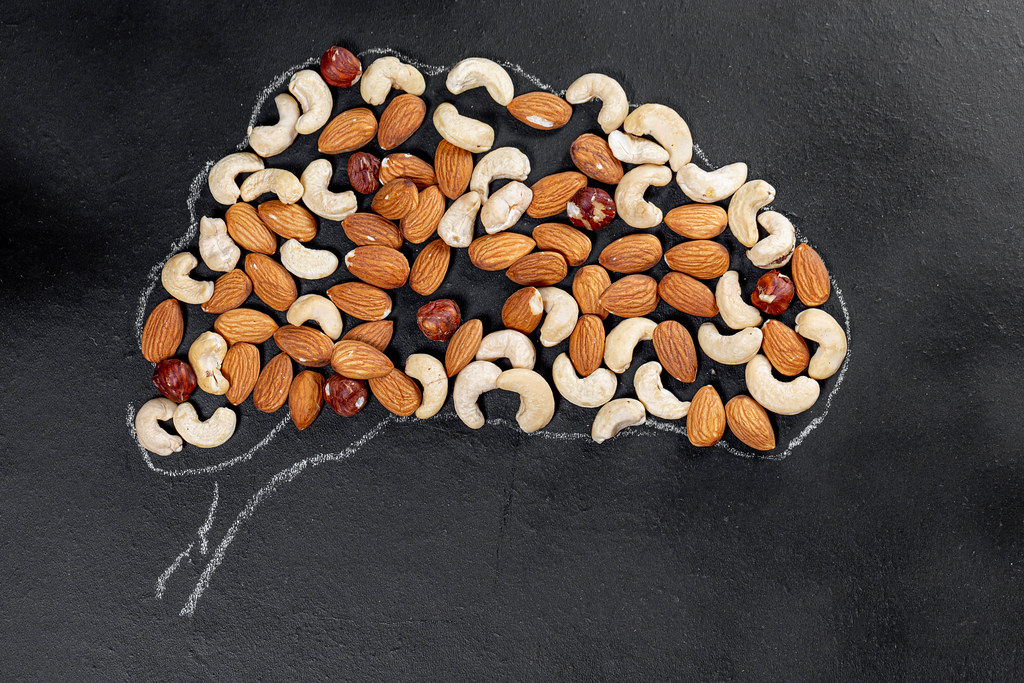
Introduction: In our quest for optimal brain health, we often overlook the power of nature’s bountiful snacks. Among them, nuts stand out as remarkable sources of brain-boosting nutrients. These small but mighty morsels are packed with essential vitamins, minerals, healthy fats, and antioxidants that support cognitive function, enhance memory, and promote overall brain health. In this comprehensive blog post, we will dive deeper into the world of nuts and explore their specific benefits for brain health. Get ready to unlock the full potential of nuts for a sharper, more resilient mind! 🌰🧠
1. Almonds: The Memory Masters 🌰📚 Almonds are often hailed as the “memory nuts” due to their impressive cognitive benefits. They are rich in nutrients that promote brain health, including vitamin E, which acts as a powerful antioxidant. Vitamin E helps protect brain cells from oxidative stress and supports overall brain function. Almonds also contain healthy fats, including monounsaturated fats and omega-3 fatty acids, which promote healthy brain cell membranes and enhance cognitive function. Consuming a handful of almonds regularly can provide a delicious and convenient way to boost your brain health and support memory function.
2. Walnuts: The Omega-3 Powerhouses 🌰🐿️ Walnuts are true superstars when it comes to brain health, thanks to their high content of omega-3 fatty acids. Omega-3s, particularly DHA (docosahexaenoic acid), play a crucial role in brain development, cognitive function, and memory. These essential fatty acids help maintain the structural integrity of brain cells, enhance neuronal communication, and reduce inflammation. In addition to omega-3s, walnuts are rich in antioxidants and polyphenols, which further protect the brain from oxidative stress and support overall brain health. Snacking on a handful of walnuts regularly can provide a significant boost to your brain health and support improved cognitive function.
3. Brazil Nuts: The Selenium Source 🌰⚡️ Brazil nuts are not only a delicious treat but also an exceptional source of selenium. Selenium is an essential mineral that plays a crucial role in brain health. It acts as an antioxidant, protecting brain cells from damage caused by oxidative stress. Selenium is also involved in the synthesis of glutathione, a powerful antioxidant that supports brain function. Including a few Brazil nuts in your diet provides an abundance of selenium, helping to support optimal brain health and function.
4. Pistachios: The Focus Enhancers 🌰🔍 Pistachios are not just a tasty snack; they are also a fantastic choice for improving focus and cognitive performance. These vibrant green nuts are rich in antioxidants, healthy fats, and fiber, making them an excellent brain-boosting food. Pistachios also contain the amino acid L-arginine, which promotes the production of nitric oxide. Nitric oxide helps improve blood flow, including blood flow to the brain, which can enhance cognitive function and mental alertness. Incorporating pistachios into your diet can improve focus, attention, and overall cognitive function.
5. Cashews: The Stress Busters 🌰😌 Cashews are not only creamy and delicious but also an excellent choice for reducing stress and promoting a calm mind. They are a good source of zinc, a mineral that plays a crucial role in brain health and cognitive function. Zinc is involved in neurotransmitter synthesis, helping to regulate mood and cognitive processes. Cashews also contain magnesium, a mineral known for its relaxing properties. Magnesium plays a key role in supporting the production of neurotransmitters, reducing anxiety, and promoting a sense of calm. Snacking on a handful of cashews can provide a natural stress-relieving effect and contribute to overall brain health.
6. Pecans: The Antioxidant Powerhouses 🌰🌿 Pecans are loaded with antioxidants, making them a top choice for protecting the brain from oxidative stress. These antioxidants, including vitamin E and other phenolic compounds, help reduce inflammation, combat free radicals, and support brain health. Pecans also contain monounsaturated fats, which promote healthy blood flow and support cognitive function. Furthermore, the high fiber content of pecans can help regulate blood sugar levels, providing a steady supply of energy to the brain. Including pecans in your diet can provide a delicious way to boost your brain health and enjoy the benefits of these antioxidant powerhouses.
7. Macadamia Nuts: Healthy Fats 🌰💪 Macadamia nuts are known for their rich, buttery flavor and their high content of monounsaturated fats. These heart-healthy fats also play a significant role in brain health. Monounsaturated fats help reduce LDL (bad) cholesterol levels, improving blood flow and supporting optimal brain function. Macadamia nuts also contain vitamin E and other antioxidants that protect brain cells from oxidative stress and contribute to overall brain health. Including a handful of macadamia nuts in your diet provides a tasty and nutritious way to support both your heart and brain health.
Conclusion: Nuts are nutritional powerhouses that offer a myriad of benefits for brain health. Whether it’s almonds for memory, walnuts for omega-3s, Brazil nuts for selenium, pistachios for focus, cashews for stress reduction, pecans for antioxidants, or macadamia nuts for healthy fats, each nut brings its unique set of nutrients and compounds that support cognitive function, memory, and overall brain health. By incorporating a variety of nuts into your diet, you can provide your brain with the nourishment it needs to thrive. So, grab a handful of nuts and savor the delicious path to a sharper, healthier mind! 🌰🧠













